
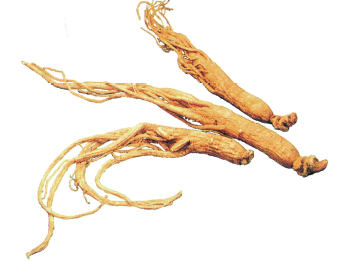
Source Ginseng Root is the dried root (or with rhizome) ofPanax ginseng C.A. Mey., (Fam. Araliaceae.)
Producing Areas Jilin, Liaoning, Heilongjiang provinces, etc.
Properties Sweet, Slightly Bitter, Neutral
Channels Spleen, Lung, Heart
Action
- Invigorates vital energy and relieves collapse-syndrome
Forcollapse-syndrome with listlessness, weak respiration and indistinct pulse; single use for exhaustion of vital energy or blood (decoction of ginseng); foryin-exhaustion. - Invigorates spleen-energy
For spleen-deficiency syndrome manifested as poor appetite, fatigue and emaciation, haemorrhagic diseases, prolapse of uterus and rectum, visceroptosis and anaemia. - Promotes the production of body fluid to quench thirst
For febrile diseases with consumption of body fluid, and diabetes. - Invigorates lung-energy
For deficiency of lung-energy manifested as shortness of breath, dyspnea, cough, night sweats, and susceptibility to the common cold. - Invigorateswei-energy
For common cold in debilitated patient, pyogenic skin infection and carbuncles ofyin type. - Supplements vital energy and calms the mind
For deficiency of heart energy manifested as palpitation, amnesia, insomnia, absentmindedness, spontaneous perspiration, cardiodyriia, etc. In addition, also for impotence, sterility, emission, ejaculation praecox, enuresis, etc.
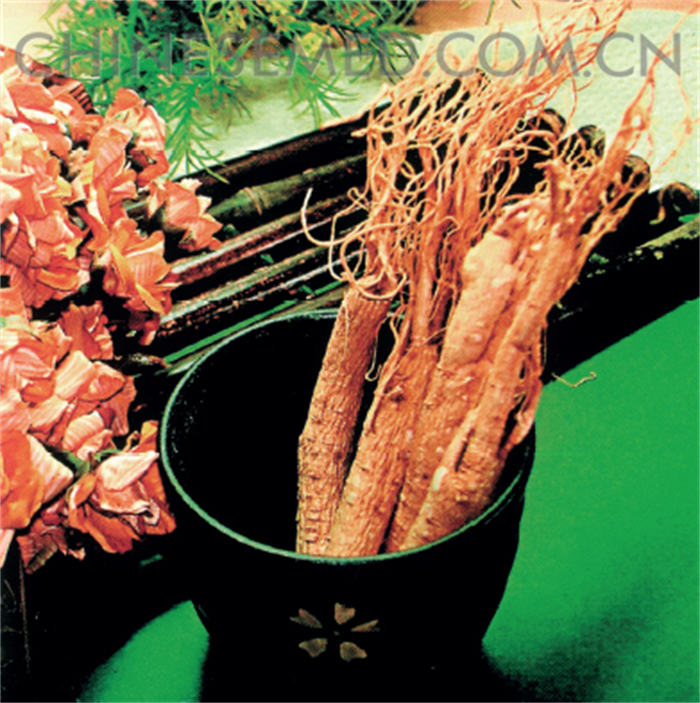
Usage and Dosage
3 – 9g is used in decoction for oral use or up to 15 – 30g in a severe and critical condition. Or 1 – 2g is swallowed as ground powder.
Storage
Seal and keep in a cool and dry place. Protect from moths and moisture.lt can be kept in wooden or paper boxes, with a small amount of ginger and lime included to keep away mould and moths.
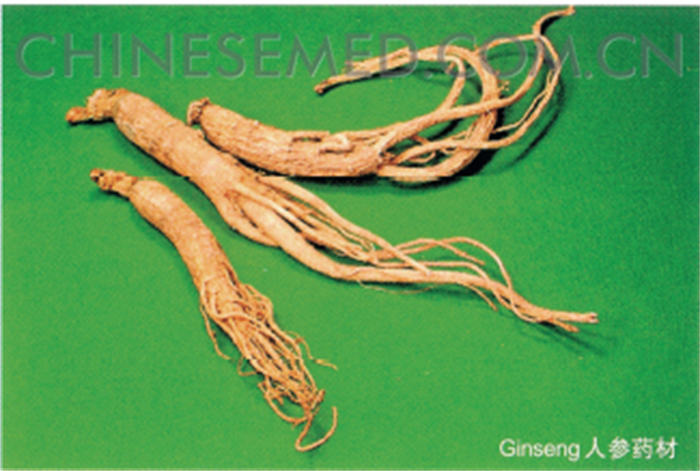
Notes Contraindicated for a person with hectic fever, bloodshot eyes due to heat-blood, dizziness, asthenia and heat syndrome without deficiency of healthy qi. Avoid consuming tea orradishes.
Herbs that react negatively with it: veratrum root. Herbs that counteract it: trogopterus dung.
Herbs that diminish its beneficial effect: honeylocust thorn.
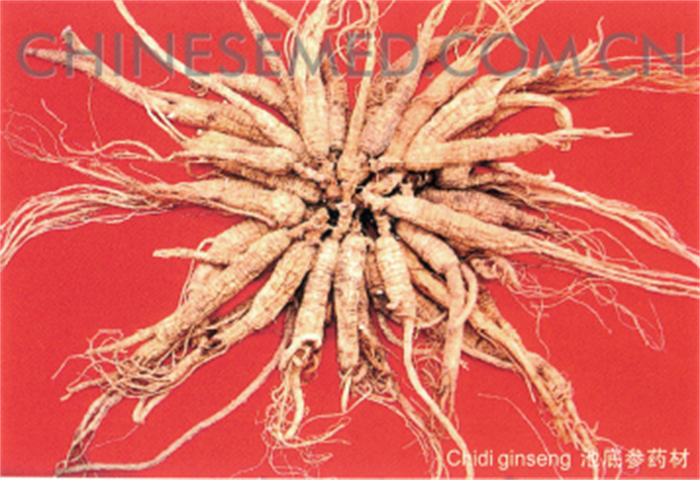

 Sun-dried Ginseng
Sun-dried Ginseng
The main root is shaped like a cone or spindle, 3 – 15cm in length, 1 – 3cm in diameter. Its surface is light yellow brown with irregular longitudinal wrinkles. It has 2 – 4 or more legs and many short fibrous roots. The broken surface is yellowish white in colour and powdery with one apparent brown yellow circle. The rhizome is thick, short and twist with adventitious roots calledDing and some marks of stems and stalks, calledLuwan. The smell is fragrant. The flavour is slightly bitter and sweet.
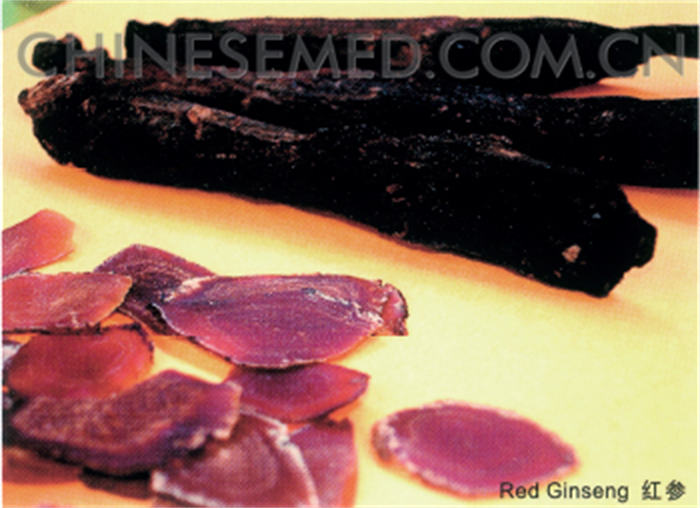
Red Ginseng
With lateral roots removed, it is reddish brown in colour and translucent, or earth yellow in colour and not transparent.
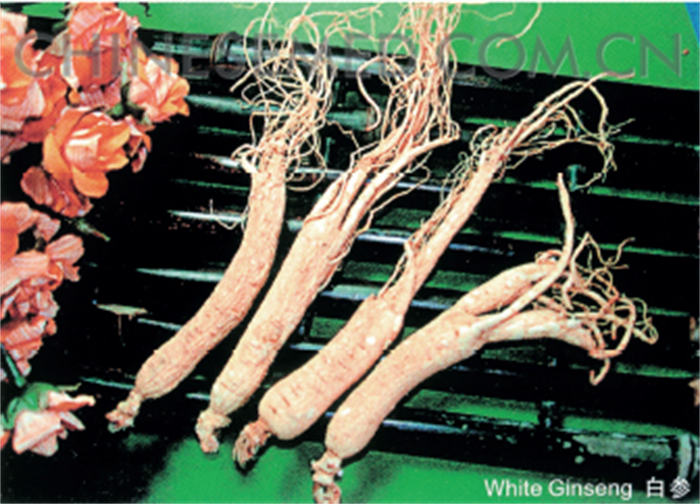
White Ginseng
The main root is 3 – 15cm in length, 0.7 – 3cm in diameter. The surface is light yellow white with many irregularly-placed circles. The flavour is sweeter.
 The main root is 2 – 10cm long, cylinder or rhombus in shape, varies in size. The surface is greyish yellow in colour, fine and tight, with thin and dense spiral crosswise stripes calledTiexianwen. Each root has two legs apart like a human figure. The fibrous roots are slender. The rhizome is long and twisted with crowdedLuwan. TheDing is shaped like a date core.
The main root is 2 – 10cm long, cylinder or rhombus in shape, varies in size. The surface is greyish yellow in colour, fine and tight, with thin and dense spiral crosswise stripes calledTiexianwen. Each root has two legs apart like a human figure. The fibrous roots are slender. The rhizome is long and twisted with crowdedLuwan. TheDing is shaped like a date core.
Professional Advice
Cultivated wild ginseng and Chidi ginseng are not wild ginseng.
Fakes
Common false Red Ginseng or Chaoxian Red Ginseng are the roots of Shanglu and Huashanshen (Physochlaina infundibularis Kuang).
Shanglu has several protruded concentric circles calledLuopanwen on its broken surface and its flavor is slightly sweet and numb after chewing. The flavour of Huashanshen is slightly bitter and numb after chewing.
Description of Quality Herb
- Sunlight-dried Ginseng: The main root is thick, short and full, without grooves.
- Red Ginseng: The main root is long, reddish brown or yellowish brown, with fine and glossy surface.
Dried Wild Ginseng: A high quality wild ginseng should have rhizome, date-core-shapedDing,Tiexianwen, root and fibrous roots. The shape ofWuxingti also signifies high quality.
Ginseng and Milkvetch Congee
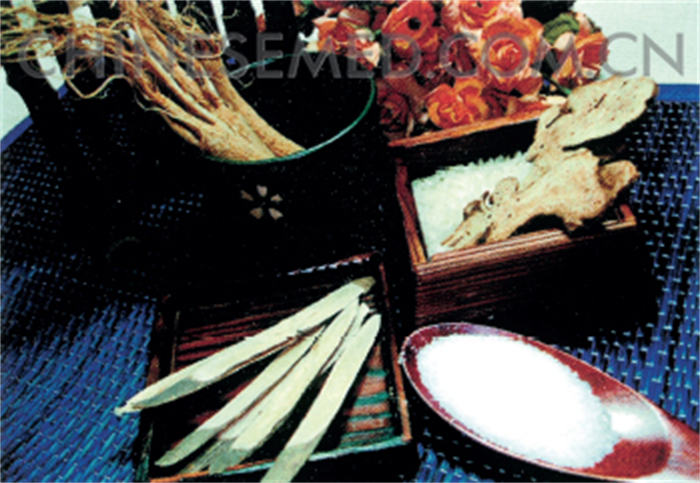
Effects Nourishes the immune system, eases consumption and slows down the aging process. It also strengthens the vital organs and aids in recovery from illness. Helps to ease shortness of breath, excessive sweating, loss of appetite, swelling, diarrhoea and other symptoms of illness.
Ingredients
Ginseng 5g, milkvetch 20g, japonica rice 80g, white sugar 5g, Bighead Atractylodes Rhizome (Bai Zhu) 10g.
Preparation
1.Slice the ginseng, milkvetch and atractylodes finely and steep in plain water.
2.After 40 minutes, place in a pot and simmer to a thick syrup. Remove the syrup, add more water and simmer again to produce a second batch of syrup.
3.Cook one batch of syrup with the rice to make congee in the morning, and the other batch in the evening. Add sugar and serve hot.
Steamed Ginseng Chicken
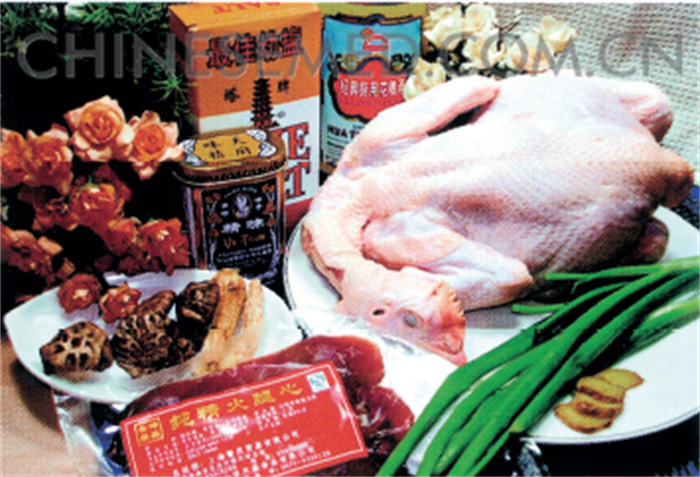
Effects Alleviates loss of appetite, poor memory, giddiness, lack of blood and other ailments. It nourishes the qi and calms the mind.
Ingredients
Ginseng 15g, one whole chicken, ham 10g, magnolia buds (soaked in water to expand) 10g, mushrooms (soaked in water to expand) 15g, seasonings to taste: salt, cooking wine, ginger, onions.
Preparation
1.Clean and wash the chicken. Chop the ham, magnolia buds, mushrooms, onions and ginger. Steam the ginseng for 30 minutes.
2.Place the chicken, steamed ginseng and all the other ingredients in the steamer and cook till done.
3.Drain the steamed chicken, collecting the clear soup in a bowl. Chop the ginseng and sprinkle it over the chicken together with the other ingredients. Heat the soup from the chicken and skim off the residue that rises to the surface, then pour the soup over the chicken and serve.

